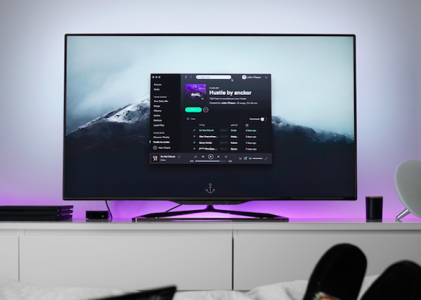“Cord Cutters” or “Cable Cutters” — individuals who cut ties with expensive cable TV plans in favor of streaming content — are a growing demographic for advertisers. But those users aren’t all navigating to content via desktops and mobile devices, they’re using their Connected TV (CTV).
Online marketers can leverage traditional display ads and exchanges, but they should also be making use of the growing segment of cable cutters through connected TV display advertising. As many as 69% of households have a connected television! Marketers who want to target people consuming content via connected TV technology use over-the-top (OTT) advertising (aka CTV advertising) for targeting and retargeting. Read on to learn about how OTT/CTV is giving a new home video display ads.
Cord Cutters and Streaming Services
According to Variety, the number of people switching from cable television to streaming in the United States will reach 33 million in 2018. And even those who remain loyal to dish or cable companies still leverage smart television tools to stream content regularly. Research firm eMarketer delivers these statistics for 2018:
- 147.5m people stream content via Netflix at least monthly
- 88.7m people use Amazon Prime Video for the same purpose
- 55m people access content on Hulu
Other providers of on-demand streaming content, such as HBO Now and Sling TV, have view counts in the millions too.
Reaching Those Millions Via Streaming Ads
The term over-the-top (OTT) advertising is used interchangeably with CTV advertising. They both refer to ads that are delivered alongside television content (typically the biggest screen in the house) streamed via internet connections. Users get the same experience as with traditional TV commercials, but advertisers have added benefits. OTT or CTV ads have a number of benefits that you don’t see with either traditional TV ads or online marketing.
Benefits of OTT/CTV Advertising
First, some OTT advertising formats are not skippable, like with in-stream ads. Mobile device users can swipe quickly by display ads on sites and social media platforms, and desktop users are often immune to the banner ads that pepper the margins of content they view or read. But OTT display ads may be prevalent on screen even for users who have paid for a service to do away with the bulk of video ads. And the in-stream video ads themselves, that aren’t skippable, they usually require the user to watch them to get to the next bit of streaming entertainment. As a result CTV inventory averages a 95-99% video completion rate, meaning viewers are watching these commercials to the end, which advertisers and their clients love!
A second major benefit of video and connected TV advertising is that it’s easy to develop highly targeted campaigns. The streaming services and devices in question already collect a lot of information about users, predominately through viewing and buying habits, and that information can be used to target ads to interests, viewing habits and even demographics such as age.
Options for Advertising in the Connected TV Space
Ad options include device-based and service-based opportunities. Let’s look at these in more detail below.
Device-Based OTT/CTV Advertising
Device-based ads (both video and display) typically appear on navigation screens and menus for users who are accessing content via technology such as smart TVs, Roku, AppleTV and ChromeCast.
Roku for example offers advertising across a variety of verticals, and passes on its access to Nielson validation tools to help brands target ads. Advertisers also get the benefit of precise targeting and advanced reporting and measurement. We wanted to say the benefit of 1:1 targeting just there, but because CTV ads can be watched by multiple users at the same time, you may actually have greater reach than 1:1!
Service-Based OTT/CTV Advertising
Service-based ads let you reach viewers on specific streaming services and channels. While the big players like Netflix and Amazon might seem like the best bet, they don’t all offer video ads yet. But you can consider ads on niche-based and smaller streaming networks if you’re looking to connect with specific users.
ESPN, for example, already offers biddable ad spots (at the channel level) within its streaming content services, but it’s working to develop retargeting offers that let advertisers connect with users across all of the ESPN (and parent company, Disney) channels. Vikram Somaya, the SVP of Global Data and Ad Platforms for ESPN, notes that the company can offer retargeting that takes a user’s interest in a 30-second video spot and connects it with a series of ad placements and touch points across all the brand’s digital networks.
You Down With OTT? Yeah You Know Me!
OTT or CTV advertising is disrupting targeting and retargeting, and more players are getting involved. Even Netflix is testing more ad structures, despite some naysayers. For brands looking to build bigger audiences — especially those age 34 and under — video ads and connective TV are going to go hand-in-hand.
Image Credits
Feature Image: Unsplash/Photo by Jens Kreuter



